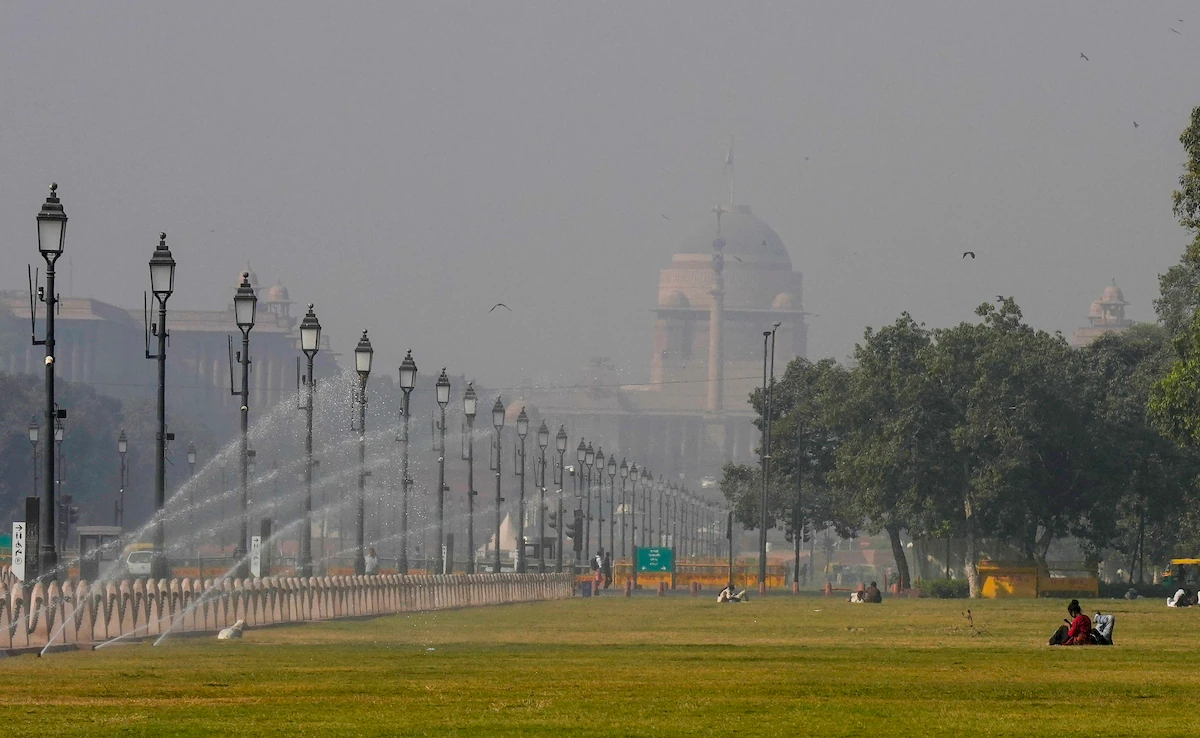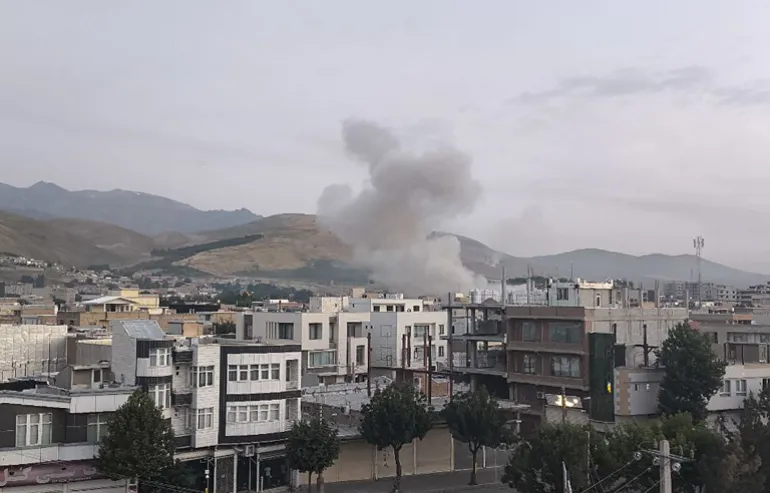- Courses
- GS Full Course 1 Year
- GS Full Course 2 Year
- GS Full Course 3 Year
- GS Full Course Till Selection
- Answer Alpha: Mains 2025 Mentorship
- MEP (Mains Enrichment Programme) Data, Facts
- Essay Target – 150+ Marks
- Online Program
- GS Recorded Course
- NCERT- First Ladder
- Polity
- Geography
- Economy
- Ancient, Medieval and Art & Culture AMAC
- Modern India, Post Independence & World History
- Environment
- Governance
- Science & Technology
- International Relations and Internal Security
- Disaster Management
- Ethics
- Current Affairs
- Indian Society and Social Issue
- CSAT
- 5 LAYERED ARJUNA Mentorship
- Public Administration Optional
- ABOUT US
- OUR TOPPERS
- TEST SERIES
- FREE STUDY MATERIAL
- VIDEOS
- CONTACT US
Tropical Flora showed significant resilience during the Deccan Volcanism on Indian Plate
Tropical Flora showed significant resilience during the Deccan Volcanism on Indian Plate

Recent Context
- A recent study reported that Deccan Volcanism, a major event of volcanic eruptions which occurred around 66 million years ago and led to mass extinctions of fauna, did not have such negative impact on tropical flora.
- The study was conducted by Birbal Sahni Institute of Palaeosciences (BSIP), an autonomous institute of Department of Science and Technology and published in the journal Earth Science Reviews.
What are the key findings of the study?
- As per the study, despite highly devastating consequences for terrestrial faunas (dinosaurs, in particular), the Deccan Volcanism only caused regional and short-term impacts on the flora.
- The Deccan Volcanism is one of the triggering agents for the Cretaceous-Paleogene (K-Pg) mass extinction that resulted in the extinction of organisms like dinosaurs and ammonoids (invertebrate cephalopods).
- K-Pg mass extinction is the most recent of the ‘Big Five’ mass extinctions.
- It occurred 66 million years ago, wiping out 75% of the Earth's plant and animal species.
Five Major Mass Extinctions
|
Event |
Approximate Time |
Main Causes |
Major organisms affected |
|
Ordovician-Silurian Extinction |
440 million years ago |
Glaciation, falling sea levels |
Marine species, especially brachiopods, trilobites |
|
Late Devonian Extinction |
365 million years ago |
Global cooling, anoxic events (deficiency of oxygen) |
Marine life, especially coral reefs |
|
Permian-Triassic Extinction |
252 million years ago |
Volcanism, methane release, anoxic events |
Marine and terrestrial species, known as "The Great Dying" |
|
Triassic-Jurassic Extinction |
201 million years ago |
Volcanic activity, climate change, sea level rise |
Large amphibians and many early reptiles |
|
Cretaceous-Paleogene Extinction |
66 million years ago |
Asteroid impact, volcanic activity |
Dinosaurs, many marine species |
|
Feature |
Gymnosperms |
Angiosperms |
|
Seed enclosure |
Unenclosed or "naked" seeds, meaning their seeds are not enclosed within a fruit |
Seed enclosed within a fruit |
|
Flowering |
No |
Yes |
|
Status |
Most threatened of all plant groups |
Most diverse and widespread |
|
Examples |
Conifers such as pine, cedar, redwood |
Rice, Wheat, Mango, Rose, Sunflower |
- Deccan Volcanism also led to the extinction of several gymnosperms however angiosperms thrived.
- Deccan Volcanism helped in the development of hyper-diverse tropical flora by providing nascent, undisturbed, fertile habitats with warm and humid climate ideal for angiosperms.
How was the study conducted?
-
Palynology:
- Palynology is the scientific study of pollen, spores, and other microscopic organic particles in sediments, rocks, and the atmosphere.
- The samples were collected from sedimentary rocks from Yavatmal area in Maharashtra.
-
Palaeoecological and paleoclimatic models:
- “Nearest Living Relative approach" to estimate the environmental conditions of extinct organisms by comparing them to their closest living relatives.
What is the significance of the findings?
- The study highlights resilience of tropical flora.
- Tropical flora refers to the plant life found in tropical regions, which are located between the Tropic of Cancer (23.5° N) and the Tropic of Capricorn (23.5° S).
- Examples include: Rice, wheat, rose, orchids, banana, mango, teak, ebony, mahogany, rosewood etc.
- It gives the hope that if left undisturbed, our tropical rainforests may quickly recover under favourable climatic conditions.
- The findings can help in forecasting responses of flora to the ongoing climatic changes due to global warming.
What is Deccan Volcanism?
- Deccan volcanism refers to the large-scale volcanic activity that occurred in the Deccan Plateau region of India, primarily around 66 million years ago, resulting in the formation of the Deccan Traps.
-
What caused it?
- The Indian tectonic plate moved over the Réunion hotspot, located near the Indian Ocean in its northward journey that started around 200 million years ago.
- Here, the plate came in contact with a "mantle plume," a rising column of hot magma from deep within the Earth's mantle, which resulted in widespread volcanic eruptions.
- The volcanic eruptions occurred towards the end of the Cretaceous period, around 66 million years ago.
- It is considered a major contributor to the mass extinction event that occurred around 66 million years ago due to reasons such as:
- Climate Disruption Due to Volcanic Gases such as CO₂, SO₂ and methane. For instance, CO₂ caused global warming, disrupting ecosystems by altering climate patterns.
- Ocean Acidification due to release of CO₂
- Acid Rain, when Sulphur dioxide (SO₂) was mixed with atmospheric moisture.
What are the Deccan Traps?
- The Deccan Traps are a large igneous province located in west-central India.
- It covers a significant part of western peninsular India, in states of Maharashtra, Goa, and Gujarat and to some extent in Madhya Pradesh and southern Rajasthan
- They consist of multiple layers of solidified flood basalt (a type of volcanic igneous rock). The extent of the Deccan Traps. The thickness of lava flows can range from a few meters to over 2,000 meters.
- It is a part of the Deccan Plateau and covers an area of approximately 500,000 square kilometres.
-
What is its Economic Importance?
- Mineral Wealth: Such as iron ore, copper, manganese, dolomite etc.
- Agricultural Importance: The weathering of basalt rocks has led to the formation of highly fertile black cotton soil, which is ideal for growing crops like cotton, jowar, bajra, groundnut etc.
- Groundwater Storage: The porous basaltic rocks act as natural aquifers, storing groundwater, which is crucial for drinking water and irrigation.
- Cement and Construction Industry: For instance, basalt from the Deccan Traps is widely used as crushed stone, gravel, and road material.
- Energy Potential: National Geophysical Research Institute [NGRI] has found the reserve presence of oil and natural gas in the Deccan region.
|
Also Read |
|
FREE NIOS Books |
UPSC Daily Current Affairs |
UPSC Monthly Mgazine |
Previous Year Interview Questions |
Free MCQs for UPSC Prelims |
UPSC Test Series |
ENSURE IAS NOTES |
Our Booklist |




